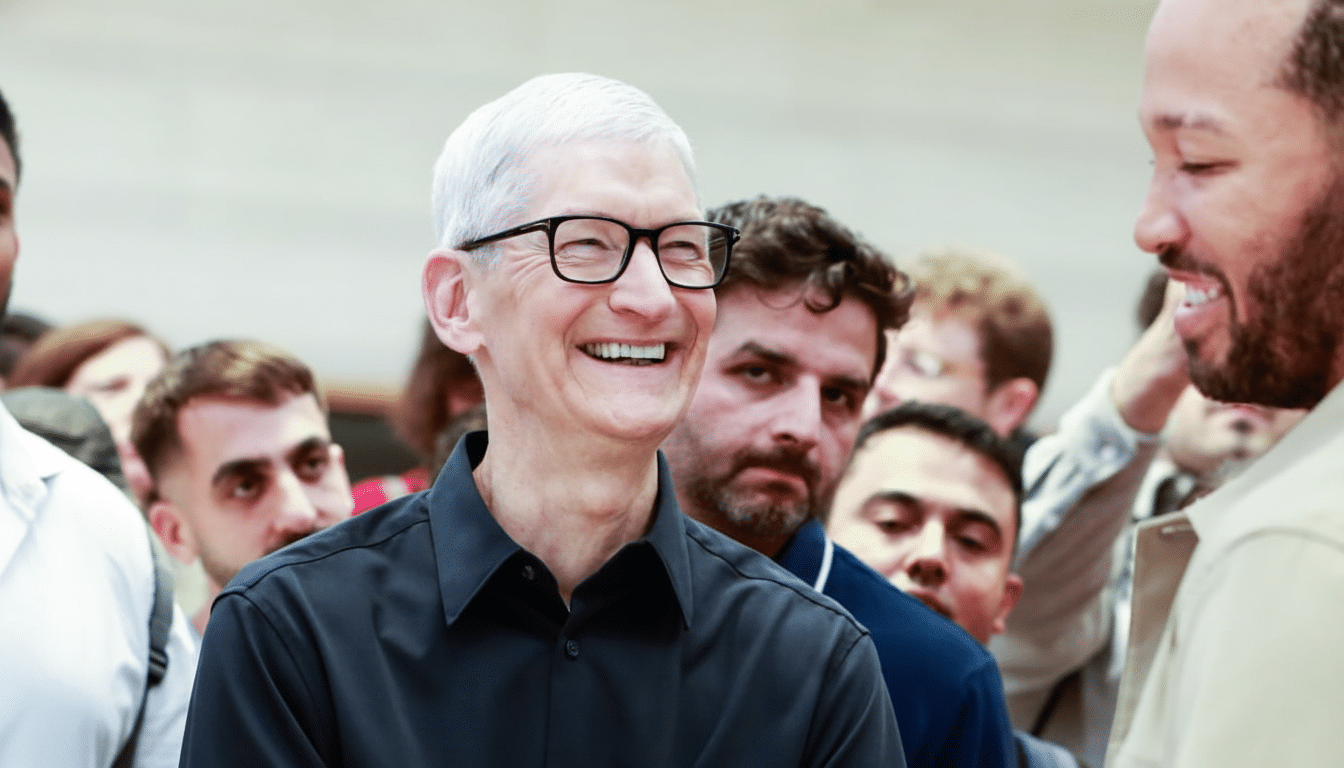Apple’s management is apparently quietly getting ready for a handover of power, with one new report suggesting that CEO Tim Cook might leave the company earlier than most people think. The Financial Times, which first revealed the brewing changes, has reported that there is early-stage planning for a shakeup at the top and that internal discussions center on ensuring a smooth handover instead of any performance-based issues.
Sources referred to by the outlet claim Apple is expecting a particularly strong holiday quarter, and this is less about urgency than it is about succession readiness. The company has long made continuity of operations a focus in its strategic planning, and the latest signals that the plan may be moving from binder to blueprint.
- Succession Planning Comes Into Focus at Apple
- John Ternus Becomes a Front-Runner to Succeed Cook
- A High Bar: Cook’s Legacy Sets a Tough Standard
- Reading the Signals and the Timeline for Any Transition
- Why Investors Are Watching Apple’s Leadership Signals
- What to Watch Next in Apple’s Leadership Succession

Succession Planning Comes Into Focus at Apple
Cook has always said that Apple maintains a detailed succession plan, an idea that accords with well-honed best practices in the world of blue-chip boards. The chair-led succession process tends to run through the Nominating and Corporate Governance Committee, with a strong emphasis on operational continuity, product cadence, and Wall Street approval.
There are precedents in the industry to explain why timing is such a big deal. High-level changes in leadership at Microsoft and Amazon were telegraphed months in advance, enabling investors and employees to recalibrate their expectations. Apple’s process looks methodical, too: the Financial Times indicates that any move is likely to wait until after its next earnings update, which will include holiday results, to allow the incoming leader to acclimatize before significant developer and product milestones.
John Ternus Becomes a Front-Runner to Succeed Cook
The clear favorite is hardware chief John Ternus. He came to Apple in 2001, and he has since played a key role in the design of every generation of iPhone, iPad, and Mac, directing all product development across the hardware engineering spectrum, including SoC, display and optics, haptics, and audio. Bloomberg’s Mark Gurman has previously named Ternus as a leading contender to succeed Cook, but he has also written that there are no absolute indications Cook is leaving soon.
Ternus has also turned up at a few more high-profile keynotes, a classic tell in Silicon Valley succession playbooks. If selected, he would even echo Cook’s ascent as an operator steeped in Apple’s culture and product pipeline rather than a flashy outsider hire.
A High Bar: Cook’s Legacy Sets a Tough Standard
Cook took over as CEO in 2011 in the most closely watched transition of power in modern tech history. Under his leadership, Apple’s market value soared beyond $3 trillion at its high points, the installed base grew to over two billion active devices, and Services turned into a growth engine with record revenue and attractive margins.
Operationally, Cook’s supply-chain know-how enabled Apple to weather geopolitical disruptions and component shortages while making generational leaps in its own chips. The firm also implemented one of the largest capital return programs ever, with aggregate share repurchases in the hundreds of billions, ensuring a persistent degree of shareholder support.

Reading the Signals and the Timeline for Any Transition
Such a move would also probably not happen until Apple reports results for the critical holiday period, the Financial Times says. After that, a decision gives a successor runway in the lead-up to Apple’s developer conference and the fall product cycle — two times when the CEO has to articulate strategy and rally the ecosystem.
The report also notes the turnover among senior ranks this year, adding to interest in who is in line to take over. The shift among top managers has brought the focus closer around Cook, and internal continuity is now a major focus, an insider told the outlet.
Why Investors Are Watching Apple’s Leadership Signals
Platform company leadership changes can alter valuations with or without maintaining fundamentals. For Apple, the watch list is whether a successor maintains the cadence of silicon innovation, substantially grows Services monetization without alienating users, and extends the company’s unmatched supply chain discipline.
Market context matters, too. The average CEO tenure at large-cap companies is far less than Cook’s, and planned handoffs usually work better than abrupt departures. But if Apple follows its own playbook — clear messaging, board alignment, and early visibility for the heir apparent — the transition could be a source of minimal turbulence.
What to Watch Next in Apple’s Leadership Succession
- Executives showing up at product events
- Changes to reporting lines in Apple’s leadership bios
- Compensation disclosures that can telegraph increasing responsibilities
Press release: Career event — The German Academic Exchange Service (DAAD) is inviting you to attend an information meeting at a college of higher education in Germany held by former DAAD scholarship holders.
For the time being, the message is preparation, not panic. Apple is signaling continuity, and the most powerful tell may be the one that defined the Cook era: a precision awareness from long before everyone else arrives.

